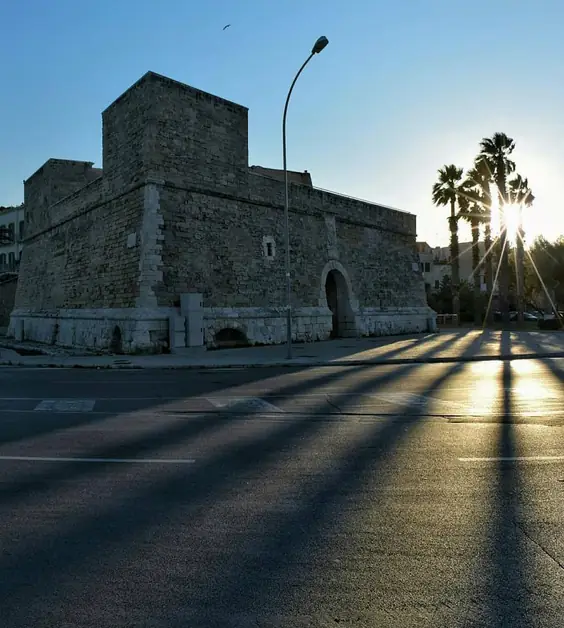Bari and Venice: Historical Ties
Bari and Venice: stories of sea, power, and secrets between two cities. A journey through monuments and historical ties.

Bari, a city overlooking the sea, holds stories and secrets linked to Venice, another gem of the Adriatic. The relationship between these two cities is complex and fascinating, rooted in centuries of commercial, cultural, and religious interactions. Walking through the streets of Bari, one can perceive the Venetian influence through various significant monuments and places.
The Fortino di Sant’Antonio is one of the ideal starting points to explore this connection. This ancient structure, located near the historic walls, dominated the marine landscape and controlled access to the port. Its strategic importance is similar to that of Venice's defensive towers, which protected the city from enemies. Here, the sea is not just a natural element but a boundary that has united and divided the two cities over the centuries.
Continuing along the Strada delle Antiche Mura, one can discover the layout of the old city, a labyrinth of alleys that tell forgotten stories. This path invites reflection on the tensions and alliances that characterized the maritime past of Bari and Venice. The streets, palaces, and squares are silent witnesses of an era when maritime trade was at the center of economic and social life.
Another emblematic place is the Church of San Marco ai Veneziani. This small church, often overlooked by tourists, symbolizes the Venetian influence in Bari. According to legend, it was built by a Venetian community that desired a place of worship for their patron saint. The church represents a spiritual bond that has crossed centuries, uniting the two cities in an embrace of faith and culture.
The Palazzo del Doge, although never a true residence of a doge, retains a name that evokes the collective imagination of a time of respect and competition between Bari and Venice. Its architectural features recall Venetian style, making it a reference point for those wishing to understand the historical interconnections between the two cities.
The Basilica of San Nicola is another place of great importance. This sanctuary is revered in both Bari and Venice, and the figure of San Nicola represents a symbol of unity between the two cities. The story of his relics, contested by Venetian sailors and the people of Bari, exemplifies how religion, politics, and commerce intertwined in the past. This episode, which occurred in 1087, is emblematic of an era when rivalries were strong, but cultural ties were equally so.
One cannot forget the Colonna Infame, located in the heart of the old city. According to legend, traitors were tied here, a symbol of public justice and power. Its shape recalls similar columns found in Venice, further highlighting the connections between the two cities. The column serves as a reminder of history, a recollection of how power and justice manifested over the centuries.
The sea has always represented a connecting element between Bari and Venice. Trade routes, sailors' tales, and the codes of maritime republics are invisible threads that unite these two cities. This itinerary is not just a walk through history but an emotional journey that invites rediscovery of Bari in a new light.
Every corner, every stone tells a story of exchanges and influences. Visiting these places means seeing Bari not just as a tourist destination but as a place rich in cultural heritage. The city also speaks Venetian, in architectural details, street names, and the tales of those who have always lived near the sea. Bari Veneziana is a journey worth experiencing, an adventure that requires only curiosity and attention.




